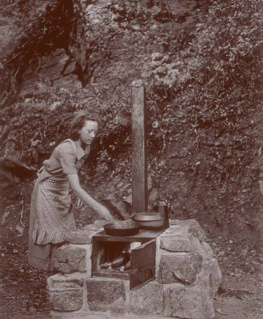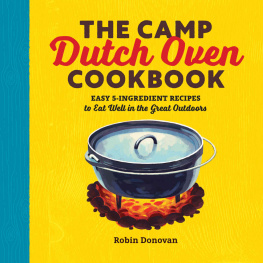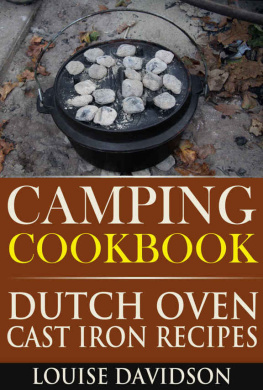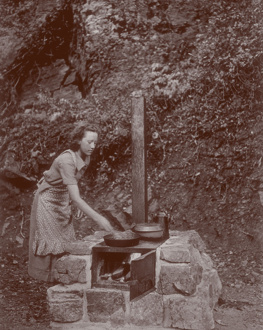Camp Cooking: 100 Years National Museum Of Forest Service
Here you can read online Camp Cooking: 100 Years National Museum Of Forest Service full text of the book (entire story) in english for free. Download pdf and epub, get meaning, cover and reviews about this ebook. City: Salt Lake City, year: 2004, publisher: Gibbs Smith Publisher, genre: Home and family. Description of the work, (preface) as well as reviews are available. Best literature library LitArk.com created for fans of good reading and offers a wide selection of genres:
Romance novel
Science fiction
Adventure
Detective
Science
History
Home and family
Prose
Art
Politics
Computer
Non-fiction
Religion
Business
Children
Humor
Choose a favorite category and find really read worthwhile books. Enjoy immersion in the world of imagination, feel the emotions of the characters or learn something new for yourself, make an fascinating discovery.
- Book:Camp Cooking: 100 Years National Museum Of Forest Service
- Author:
- Publisher:Gibbs Smith Publisher
- Genre:
- Year:2004
- City:Salt Lake City
- Rating:5 / 5
- Favourites:Add to favourites
- Your mark:
Camp Cooking: 100 Years National Museum Of Forest Service: summary, description and annotation
We offer to read an annotation, description, summary or preface (depends on what the author of the book "Camp Cooking: 100 Years National Museum Of Forest Service" wrote himself). If you haven't found the necessary information about the book — write in the comments, we will try to find it.
Abstract: The National Museum of Forest Service History presents a charming cookbook that celebrates decades of camp cooking by countless Forest Service agents in the field. Featuring legendary recipes for Dutch oven meals, open-fire dishes, and other tasty outdoor specialties used daily in the early days of the Forest Service, Camp Cooking has dozens of recipes, photos, and anecdotes that tell the whole history of these brave and hardy individuals. Dedicated rangers wives prepared meals with limited resources as they accompanied their husbands in the field, often supplementing cooking with k-rations cooked over an open fire. In rustic and remote locations, delicious, time-tested creations were prepared and served, including Dutch Oven Beer Bread, Parmesan Mashed Potatoes, Pioneer Night Stew, and Creamy Pumpkin Pie. To pay tribute to decades of dedication of Forest Service employees, the Intermountain Region and the National Museum of Forest Service History (http://www.nmfs-history.net) are proud to present this collectible cookbook. For more information, visit http://www.fs.fed.us/newcentury/cookbook.htm
Unknown: author's other books
Who wrote Camp Cooking: 100 Years National Museum Of Forest Service? Find out the surname, the name of the author of the book and a list of all author's works by series.













